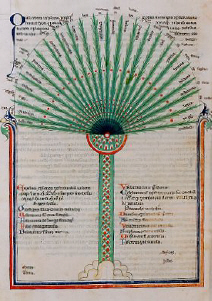IV. 4. 33
(Armstrong Selection and Translation from the Enneads)
The movement of the universe is not casual, but goes according to the logos of its living organism; there must therefore be a harmony of action and experience, and an order which arranges things together, adapting them and bringing them into due relation with each other, so that according to every figure of the universal movement there is a different disposition of the things which it governs, as if they were performing a single ballet in a rich variety of dance-movements. In our ballets, too, there .is no need to mention, since they are obvious, the external elements which play their part in the performance, the way in which piping and singing and everything else which joins in contributing to the total effect, change variously at every movement. But the parts of the dancer’s body, too, cannot possibly keep the same position in every figure; his limbs bend as they follow the pattern; one is borne down, another up, one works hard and painfully, another is given a rest as the figuring changes. The dancer’s intention looks elsewhere; his limbs are affected in accordance with the dance and serve the dance, and help to make it perfect and complete: and the connoisseur of ballet can say that to fit a particular figure one limb is raised, another bent together, one is hidden, another degraded; the dancer does not choose to make these movements for no reason, but each part of him as he performs the dance has its necessary position in the dancing of the whole body.
